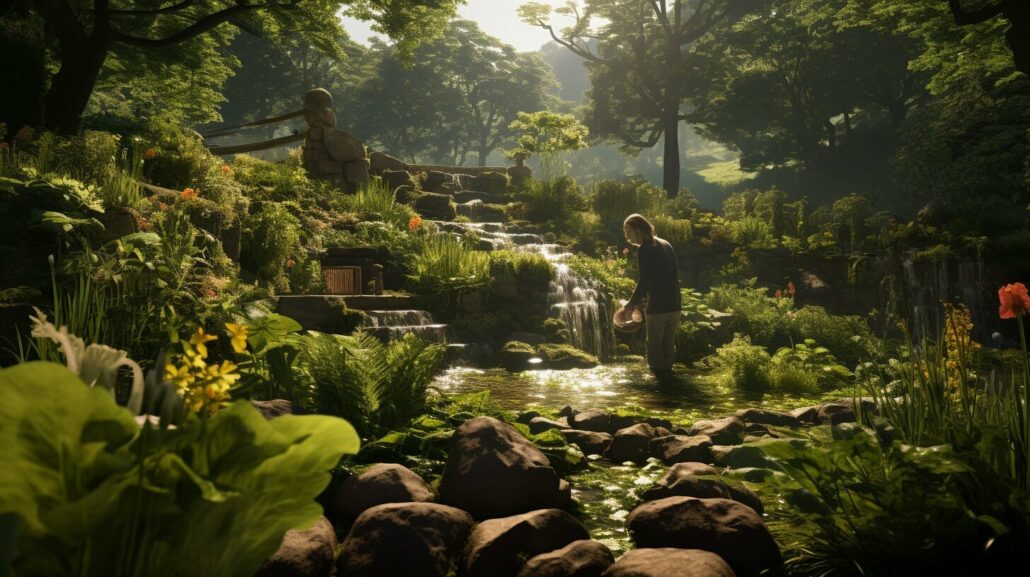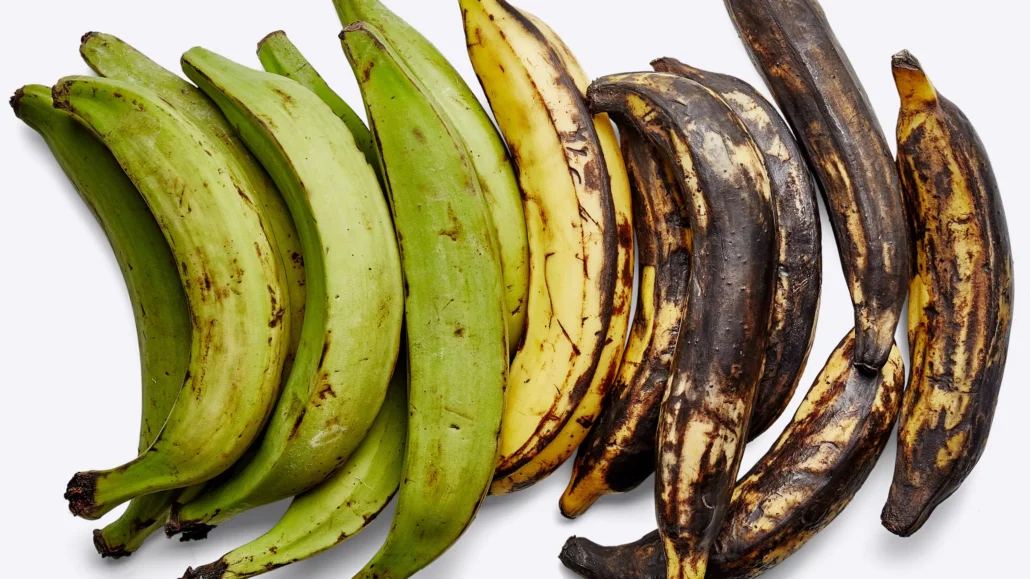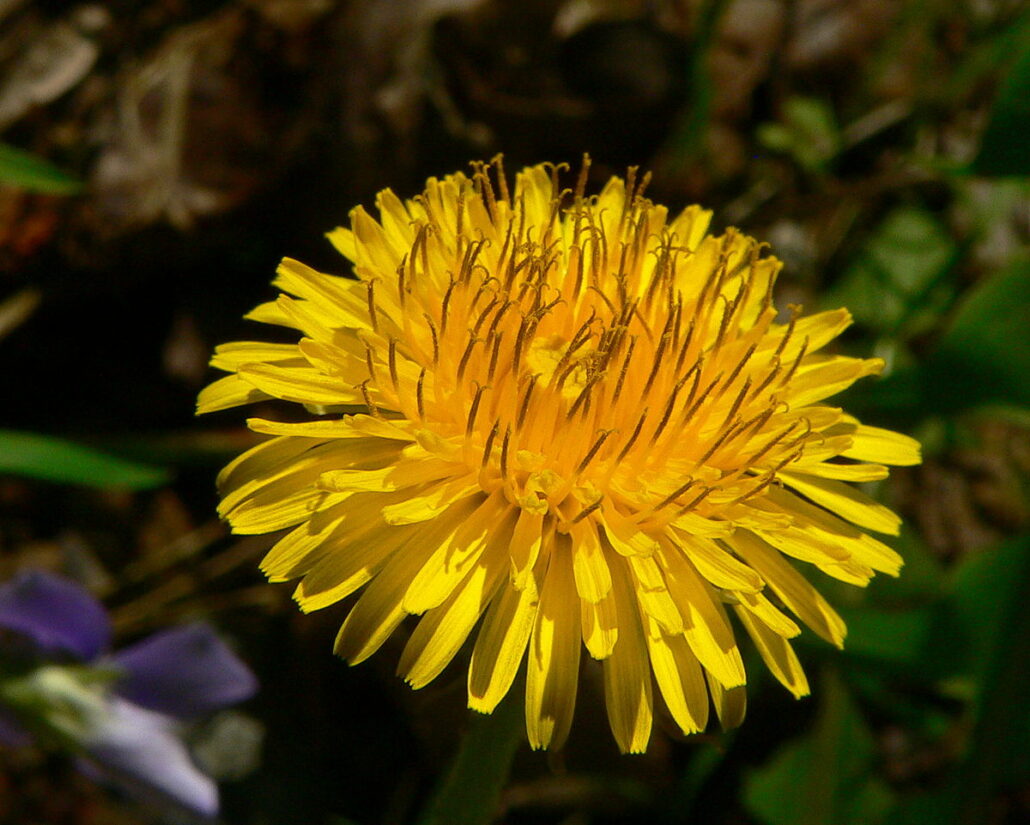Have you ever wondered what it would be like to gather your food directly from nature, bypassing the grocery store and connecting with the Earth’s bounty? That’s exactly what go foraging is all about. Foraging is the act of gathering food and plants directly from the wild, whether it’s fruits, vegetables, herbs, meat, or even insects. It’s an age-old practice that has evolved from being a necessity for survival to a hobby and lifestyle choice for many in the 21st century.
Foraging is not limited to just gathering food. It can also involve the collection of non-food items like medicinal herbs or even engaging in religious rituals. The essence of foraging is rooted in the knowledge of nature, from identifying edible plants and animals to knowing how to safely clean and prepare them for consumption. People go foraging for various reasons, whether it’s for survival, to learn and study about the natural world, or to combat the issues associated with mass food production and consumption.
As the trend of sustainable living and self-sufficiency gains traction, foraging has become a way for individuals to take control of their food choices and reduce their environmental impact. It offers the opportunity to reconnect with nature and rediscover the joy of gathering food directly from the Earth. Whether you live in the countryside or the heart of the city, foraging is a practice that can be embraced anywhere.
Key Takeaways:
- Foraging involves gathering food and plants directly from the wild.
- It has evolved from being a necessity to a hobby and lifestyle choice.
- Foraging can be done for food, medicinal herbs, or religious rituals.
- People go foraging for survival, learning, and combatting mass food issues.
- Foraging promotes sustainable living and reconnecting with nature.
Why Do People Go Foraging?
People have different motivations for going foraging. Some forage as a means of survival, relying on the practice to gather food for their daily sustenance. Others forage as a way to study and learn about the natural world. For many, foraging is a way to combat the problems associated with mass food production and consumption, such as environmental impact, waste production, and questionable food regulations.
Foraging allows individuals to have more control over their food choices and promotes sustainability. It can also be a way to reconnect with nature and reclaim a sense of self-sufficiency.
Foraging is a way to combine my love for nature with my commitment to sustainable living. I enjoy the process of gathering my own food and knowing exactly where it comes from. It gives me a sense of control and empowerment in a world where our food systems can often feel disconnected and impersonal.
Benefits of Foraging
There are numerous benefits associated with foraging:
- Control over Food Choices: Foraging allows individuals to select and consume food that aligns with their personal preferences and dietary needs. It enables them to avoid additives, preservatives, and other questionable ingredients often found in commercially produced food.
- Sustainability: By foraging for food, individuals reduce their reliance on mass food production, which often has a significant environmental impact. Foraging promotes the use of natural resources in a more sustainable and responsible manner.
- Connection with Nature: Engaging in foraging activities provides an opportunity to immerse oneself in nature, learn about local ecosystems, and develop a deeper appreciation for the environment.
- Sense of Self-Sufficiency: Foraging empowers individuals to become more self-sufficient by relying on their own knowledge and skills to gather food directly from the natural world.
- Health Benefits: Foraged foods are often fresh, nutritious, and free from harmful chemicals. Incorporating foraged ingredients into meals can contribute to a healthy, balanced diet.
By embracing foraging, individuals not only experience the joys of gathering their own food but also contribute to a more sustainable and environmentally conscious way of living.
| Benefit | Description |
|---|---|
| Control over Food Choices | Foraging allows individuals to have full control over their food choices, avoiding additives and questionable ingredients. |
| Sustainability | Foraging promotes the use of natural resources in a sustainable manner, reducing reliance on mass food production. |
| Connection with Nature | Foraging activities provide an opportunity to develop a deeper connection with the natural world and gain a better understanding of local ecosystems. |
| Sense of Self-Sufficiency | By foraging, individuals can become more self-sufficient and rely on their own knowledge and skills to gather food. |
| Health Benefits | Foraged foods are often fresh, nutritious, and free from harmful chemicals, contributing to a healthy diet. |
What Can You Forage for?
When it comes to foraging, the possibilities are endless. The variety of wild plants and foods you can gather depends on your location and the specific environment. From medicinal herbs to tasty fruits and nuts, there’s something for everyone to explore in the world of foraging. Here are some common foraging finds you might come across:
- Medicinal Herbs: Plants like jewelweed offer natural remedies for various ailments. Discover the healing properties of these wild plants and incorporate them into your health routine.
- Edible Weeds: Weeds like dandelion and chickweed can be transformed into nutritious meals. Expand your culinary horizons and embrace the flavors of these unexpected ingredients.
- Wild Fruits and Berries: Delicious finds like pawpaws and huckleberries may be hiding in the woods. Experience the joy of foraging by tasting the bountiful fruits nature has to offer.
- Wild Nuts: Hickory nuts and chestnuts are just a few examples of the wild nuts waiting to be discovered. These nutrient-packed treats can be enjoyed raw or incorporated into various recipes.
- Roots: Explore the underground world of arrowroot and wild parsnip. Unearth these hidden gems for a unique and flavorsome addition to your meals.
- Freshwater Plants: Watercress is a popular freshwater plant that adds a refreshing touch to salads and other dishes. Discover other aquatic plants that can elevate your culinary creations.
- Sea Veggies: Dive into the world of sea kale and other delectable sea vegetables. These oceanic delights offer a unique taste of the marine environment.
- Spices: Seek out wild varieties of mint and ginger to add a burst of flavor to your cooking. These aromatic spices will take your dishes to the next level.
- Grains and Seeds: Angelica and maple seeds are just a few examples of the grains and seeds you can find in the wild. Discover the diverse range of options and incorporate them into your culinary repertoire.
- Other Foraging Finds: Foraging isn’t just about plants and nuts. Keep an eye out for morels, a prized mushroom delicacy, and edible pollen to add unique flavors and textures to your meals.
The availability of these foraging treasures will depend on the season and your geographical location. It’s important to research and understand the specific plant species in your area before embarking on a foraging adventure. Always be respectful of nature and only gather what you will use, ensuring the sustainability of foraging practices for generations to come.
The Rise of Urban Foraging
Urban foraging has become increasingly popular in recent years, as people seek more sustainable ways to source their food and reconnect with nature in urban environments. With growing awareness of the environmental impacts of conventional agriculture, individuals are turning to foraging in the city as a means to reduce their carbon footprint and rely less on corporate food systems.
One of the key advantages of urban foraging is the ability to find wild plants and edible foods in unexpected places. Even in bustling cities with limited green spaces, there are often pockets of nature where a variety of edible plants can be found. From parks and abandoned lots to roadside edges and urban gardens, foragers can discover a wealth of wild plants in urban areas.
Urban foraging not only provides access to fresh, organic produce, but it also offers an opportunity to reclaim traditional practices that have been overshadowed by modern food systems. By engaging in urban foraging, individuals can challenge harmful stereotypes associated with foraging as primitive or uncivilized, and instead embrace it as a sustainable and empowering way of life.
The Benefits of Urban Foraging
There are numerous benefits to engaging in urban foraging:
- Environmental Sustainability: By harvesting wild plants in urban areas, foragers contribute to local biodiversity and reduce the demand for conventionally grown produce that often relies on harmful pesticides and intensive farming practices.
- Health and Nutrition: Wild plants are typically more nutritious than their cultivated counterparts, offering a wider range of essential vitamins and minerals. Urban foragers also have the advantage of knowing exactly where their food comes from and how it has been treated.
- Cost Savings: Foraging in the city can be a cost-effective way to supplement your diet with fresh produce, as it eliminates the need to purchase expensive organic produce from grocery stores.
- Connection with Nature: Even in the midst of a concrete jungle, urban foraging allows individuals to connect with the natural world, fostering a sense of well-being and a deeper appreciation for the environment.
Foraging Ethics and Safety
As with any type of foraging, it’s essential to follow ethical guidelines and prioritize safety when urban foraging:
- Respect Local Regulations: Before you start foraging in urban areas, familiarize yourself with any local regulations or restrictions that may be in place. Some areas may have specific rules regarding foraging in public spaces or protected areas.
- Stay Aware of Your Surroundings: Take note of potential sources of pollution or contaminants in the urban environment, such as busy roads or sites with industrial activity. Avoid foraging in areas that may have been exposed to harmful substances.
- Practice Sustainable Harvesting: When harvesting wild plants, always ensure that you leave enough behind to sustain the population and provide food for other foragers and wildlife.
- Proper Identification: Invest time in learning to identify edible plants and distinguish them from toxic or inedible species. Utilize reliable resources, books, and experts to ensure accurate identification.
- Seek Permission: If you plan to forage on private property, always seek permission from the landowner to ensure respectful and legal foraging practices.
By adhering to these ethical guidelines and safety precautions, urban foragers can enjoy the benefits of a sustainable and rewarding practice while respecting the environment and local communities.
Exploring Linguistic Perspectives on Foraging
The practice of foraging holds different meanings and practices across cultures, giving rise to diverse linguistic perspectives. For some, foraging extends beyond the mere gathering of food, encompassing the search for medicinal herbs, participation in religious rituals, or fostering connections with nature through study and observation. Motivations and habits related to foraging can vary significantly from person to person and from one culture to another. It is essential to approach foraging with an appreciation for the cultural and linguistic context in which it occurs.
In certain cultures, foraging is deeply intertwined with traditional practices, passed down through generations. For instance, indigenous communities possess a rich knowledge of their local flora and fauna, including the identification of edible plants and the understanding of the seasons for optimal foraging. The linguistic expressions used to describe foraging in these cultures highlight the important role it plays in their history, identity, and sustenance.
“The art of foraging goes beyond the mere act of finding sustenance. It is a pathway to spiritual connection with the land and a means of preserving our ancient traditions.” – Elder Mariska, Native American Tribe
Linguistic perspectives also shed light on the diverse motivations for foraging. While survival and sustenance remain fundamental drivers, the cultural significance and personal fulfillment derived from foraging vary from culture to culture. Some communities view foraging as a way to maintain a strong bond with nature, fostering a sense of interconnectedness and respect for the environment. Others see it as an opportunity to rediscover ancient knowledge and preserve cultural heritage.
Furthermore, linguistic nuances reveal the nuanced understanding and importance assigned to different foraged items in various cultures. For example, certain languages may possess distinct words to describe unique plant species with medicinal properties or spiritual significance. This linguistic richness captures the deep connection between culture, language, and foraging practices.
The linguistic perspectives on foraging provide valuable insights into the multifaceted nature of this practice. By appreciating the diverse meanings and motivations associated with foraging across cultures, we can cultivate a more profound understanding and respect for this age-old tradition.

Foraging in the 21st Century Pop Culture
Foraging has made its way into the realms of pop culture, with social media platforms like TikTok playing a significant role in its popularization. Influencers on these platforms share their exciting foraging journeys, inspiring others to explore and embrace this age-old practice. The influence of social media has allowed foraging to gain traction among a wider audience, sparking new trends and creating a sense of community around the activity.
However, it’s essential to be mindful of the potential commercialization of foraging in pop culture. With the rise in popularity, businesses have started capitalizing on the trend, marketing products and services related to foraging lifestyles. As consumers, it is crucial to remain vigilant and discerning to ensure that the essence of foraging is not diluted or exploited for profit.
The increasing presence of foraging in pop culture is a reflection of the growing interest in sustainable living, self-sufficiency, and a desire to reconnect with nature in a modern context. It signifies a shift in consciousness, as more individuals seek alternative ways to engage with the natural world and take control of their food choices.
This image shows the impact of foraging in pop culture, highlighting the visual appeal and relevance of the practice in contemporary society. As the image depicts, foraging is not only a means of sustenance, but it has also become a symbol of a modern lifestyle that embraces sustainability and a deep connection with nature.
Foraging Trends and the Influence of Social Media
The influence of social media platforms, particularly TikTok, has significantly contributed to the rise of foraging trends. The instantaneous nature of these platforms allows users to share their foraging experiences in real-time, inspiring others to explore the practice themselves. Hashtags like #foraging and #wildfood have gained popularity, facilitating discussions, sharing of tips, and creating a sense of community among foragers.
| Trend | Description |
|---|---|
| #ForagingChallenge | This trend encourages users to share their foraging adventures and discoveries, showcasing the diverse array of edible plants and food sources in nature. |
| Foraging Recipes | Many social media users are sharing creative foraging recipes, demonstrating how to incorporate wild ingredients into delicious and nutritious meals. |
These emerging trends highlight the role of social media in educating and encouraging individuals to embrace foraging as a lifestyle choice. However, it is important to approach these trends with caution and ensure that responsible foraging practices are promoted, respecting the environment and preserving natural resources.
“Foraging in pop culture has provided a platform for diverse voices and experiences, bringing attention to the sustainable, self-sufficient aspects of this ancient practice. However, it is crucial to remain grounded and cognizant of the potential commodification and dilution of its true essence.”
The quote above captures the importance of maintaining a balanced perspective on foraging in pop culture. While it is inspiring to witness the growing interest in sustainability and nature connection through mainstream media, it is essential to stay true to the core values and principles of foraging.
By embracing the positive aspects of foraging trends, while remaining critical of their impact, we can ensure that foraging remains a meaningful and authentic practice that helps individuals reconnect with the natural world.
The True Essence of Foraging
The true essence of foraging goes beyond the literal act of gathering food from nature. It is a state of mind, a way of approaching the world with curiosity and a deep desire to live in harmony with the natural environment. Foraging is not limited to the wilderness; it can be practiced anywhere, whether it’s in gardens, parks, or even farmed fields.
For me, the essence of foraging lies in embracing the principles of sustainable living and autonomy in food choices. It is about developing a profound understanding of our local flora and fauna, recognizing the interconnections within ecosystems, and honoring the natural cycles that sustain us.
When I forage, I am not simply searching for nourishment. I am on a quest to connect with the earth, to witness the beauty of nature, and to rediscover the abundance that surrounds us. Each plant or edible ingredient I gather carries a story, a history that connects me to the land and its heritage.
Foraging is not just about finding food; it’s about finding ourselves in the process.
It is in the act of foraging that I feel a profound sense of purpose and fulfillment. The simple act of plucking a wild herb or harvesting a ripe fruit fills me with a sense of satisfaction and gratitude. I am reminded of our primal connection to the earth, a connection that modern society often obscures.
Foraging is a journey of discovery, where we learn to identify and appreciate the vast array of flavors, textures, and scents that nature has to offer. It is a sensory experience that engages all our senses, heightening our awareness and deepening our relationship with the natural world.
The essence of foraging is not confined to the gathering of food; it permeates every aspect of our lives, influencing how we perceive and interact with the environment. It is a state of mind that encourages mindfulness, gratitude, and a profound respect for the interconnected web of life.
The Many Dimensions of Foraging
Foraging encompasses more than just finding food. It is a multifaceted practice that nourishes not only our bodies but also our souls. Here are some essential dimensions of foraging:
- Sustainability: Foraging promotes sustainable living by reducing our reliance on conventional food systems, which often contribute to environmental degradation and excessive waste.
- Autonomy: Foraging empowers us to make informed and conscious choices about the food we consume, fostering a sense of independence and self-sufficiency.
- Connection: Through foraging, we forge a deep connection with the land and its natural rhythms, fostering a sense of belonging and rootedness.
- Education: Foraging is a lifelong journey of learning, as we discover new plants, their culinary or medicinal uses, and the rich cultural heritage associated with traditional foraging practices.
As we embrace the true essence of foraging, we open ourselves up to a world of wonder and discovery. It is a path that invites us to slow down, observe, and appreciate the beauty and abundance that nature provides.
The Joys of Foraging and Its Benefits
Foraging offers numerous benefits beyond just the gathering of food. It allows me to connect with nature, experience the joy of discovery, and develop a deeper appreciation for the environment.
When I embark on a foraging adventure, I feel a sense of exploration and connection with the natural world. It’s a chance to immerse myself in the sights, sounds, and smells of the outdoors, and to experience the thrill of finding something edible or useful.
Foraging provides a unique opportunity to engage with nature in a meaningful way. It’s a chance to slow down, observe the beauty around me, and develop a deeper understanding of the ecosystems that support us. It’s a powerful reminder of our interconnectedness with the natural world.
By foraging, I also contribute to sustainability. Instead of relying solely on mass food production, I reduce my carbon footprint by sourcing food directly from the environment. Foraging promotes a more sustainable and locally-focused approach to food, which has a positive impact on the planet.
Furthermore, foraging grants me a sense of autonomy and control over my food choices. I have the knowledge and ability to identify and gather edible plants and fungi, ensuring that I consume fresh and nutritious food. This connection to the food I gather instills a sense of confidence, self-sufficiency, and satisfaction.
Foraging can also be therapeutic, offering a respite from the stresses of daily life. It provides a chance to engage in mindful and meditative practices, as I focus my attention on the natural world around me. The act of foraging itself can be a form of stress relief, allowing me to slow down, breathe deeply, and immerse myself in nature’s embrace.
Overall, the joys of foraging are many. It’s about more than just finding food; it’s about reconnecting with nature, promoting sustainability, and embracing a sense of autonomy. So why not grab a basket and join me in exploring the bountiful treasures that the natural world has to offer?
Foraging Safety and Precautions
When engaging in foraging, it is essential to prioritize safety and take necessary precautions. Exploring the bounties of nature can be a fulfilling experience, but it’s important to be aware of potential risks and to equip yourself with the knowledge needed to forage safely. Here are some key considerations to keep in mind:
Consult Local Resources and Experts
To ensure foraging safety, consult local resources, such as field guides or online databases, to identify edible plants in your area. Engaging with experienced foragers or joining local foraging groups can provide valuable insights and guidance. Experts can help you distinguish between edible and toxic plants, as well as offer advice on any safety considerations unique to your region.
Exercise Caution Due to Climate Change and Invasive Species
Climate change and the proliferation of invasive species have impacted the reliability of traditional knowledge about native plants. Therefore, it is crucial to exercise caution when foraging. Stay informed about any changes in the local ecosystem, as some plants may have altered their growth patterns or may be outcompeted by invasives. Seek updated information to ensure accurate identification of plants.
Identify Edible Plants with Confidence
Identifying edible plants correctly is the cornerstone of safe foraging. Familiarize yourself with the distinguishing characteristics of edible plants, such as their leaves, stems, flowers, and fruits. Pay special attention to any poisonous look-alikes. Use comprehensive field guides or reliable online resources for accurate plant identification. When in doubt, consult an expert before consuming any unknown plant.
Remember, foraging safety depends on your ability to accurately identify edible plants. If you are uncertain, it is best to err on the side of caution and refrain from consuming unknown plants.
Prioritize a Well-Rounded and Nutritious Diet
While foraging provides an opportunity to gather nutritious food from nature, it is important to acknowledge that not all dietary needs can be exclusively met through foraging. Foragers should prioritize a well-rounded diet that includes a variety of food groups and nutrients. Incorporate wild edibles into your meals as a complement to other food sources, ensuring a balanced and nourishing diet.
Foraging can be a delightful adventure, providing a connection to nature and an appreciation for the earth’s abundance. By taking necessary precautions and staying informed about best practices, you can ensure a safe and enjoyable foraging experience.
Foraging Etiquette and Sustainability
Practicing good foraging etiquette is crucial to promote sustainable foraging and ensure the availability of resources for everyone. As an avid forager, I prioritize respecting the environment and leaving enough for others to enjoy the abundance of nature.
When venturing out to forage, it’s important to seek permission if you are on private land. This shows respect for property owners and helps maintain a harmonious relationship within the community. Additionally, I always make sure to be mindful of not depleting natural resources. By gathering in moderation and leaving behind enough for others, we can all contribute to the long-term sustainability of our natural ecosystems.
It’s also essential to be aware of potential environmental contaminants, such as exhaust fumes near busy roads. I choose areas where pollution is minimal to ensure the safety and integrity of the foraged items. By engaging in sustainable practices and avoiding contaminated areas, we can ensure the health and well-being of ourselves and those who consume the foraged goods.
By following these simple guidelines and respecting the environment, we can preserve the beauty of nature and the continuation of foraging traditions. Let’s forage responsibly, leaving enough for others while enjoying the bounties that nature has to offer.










